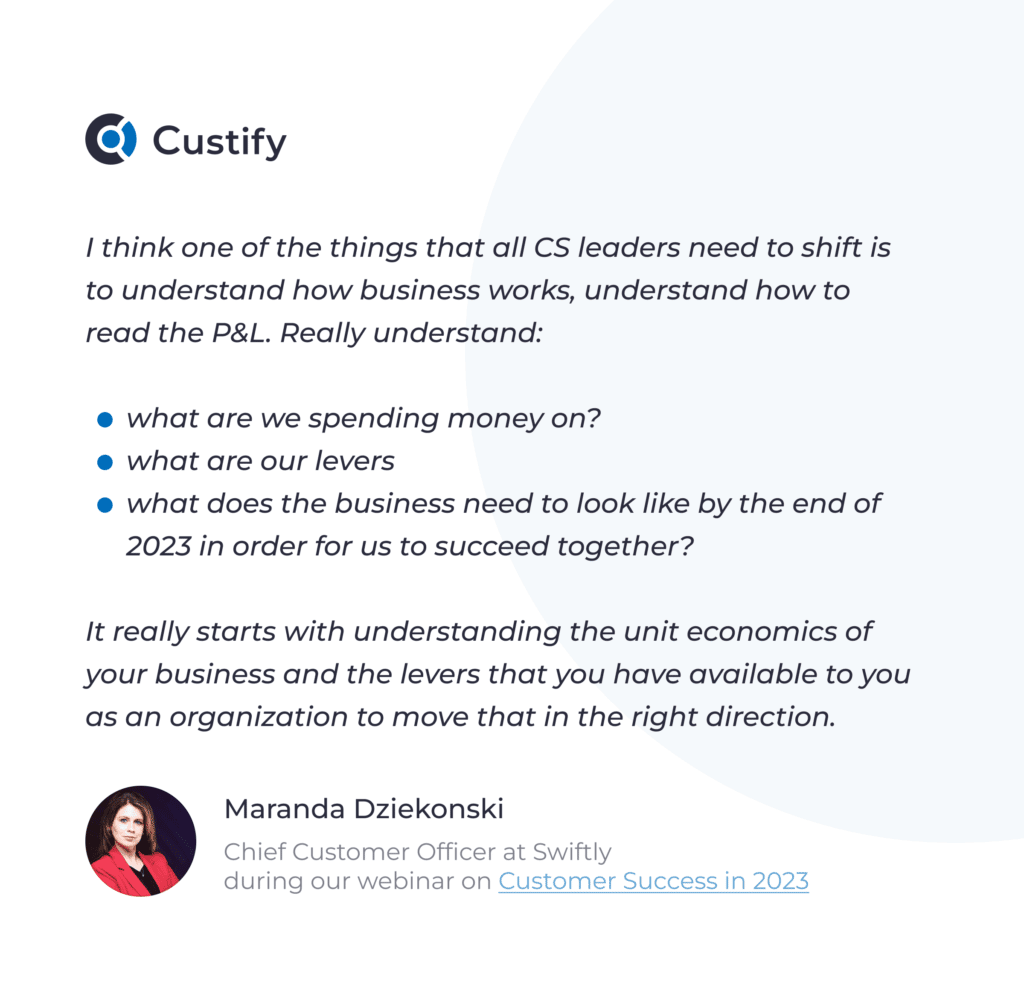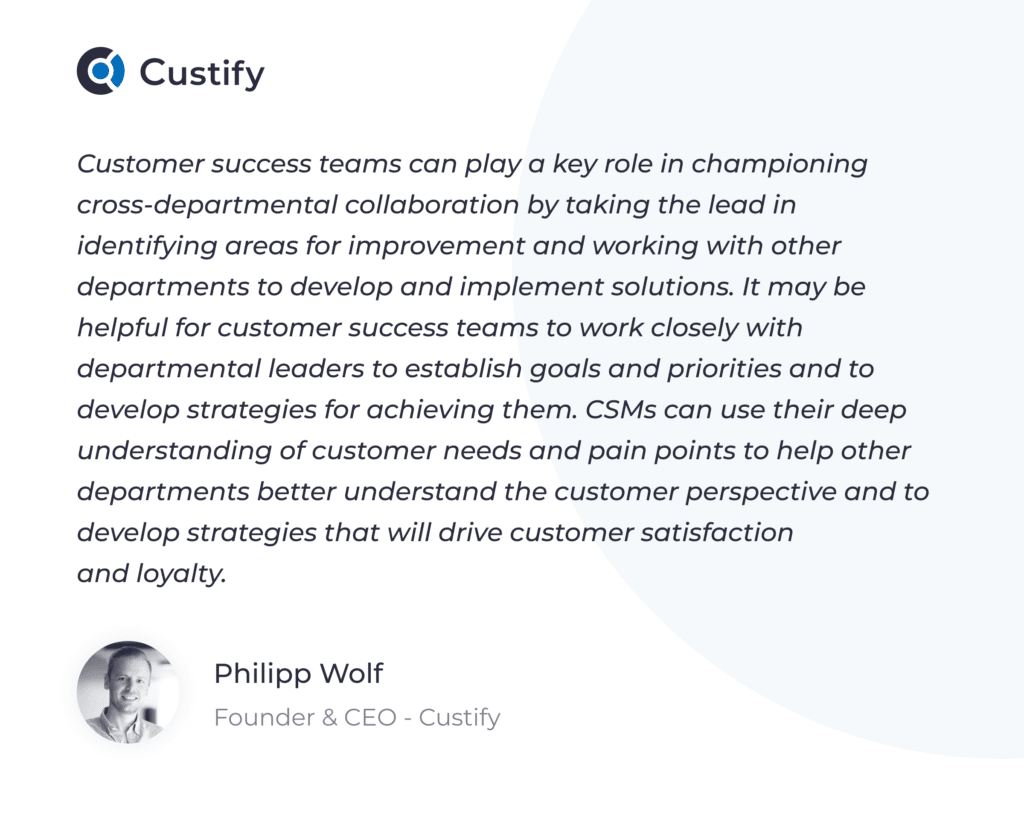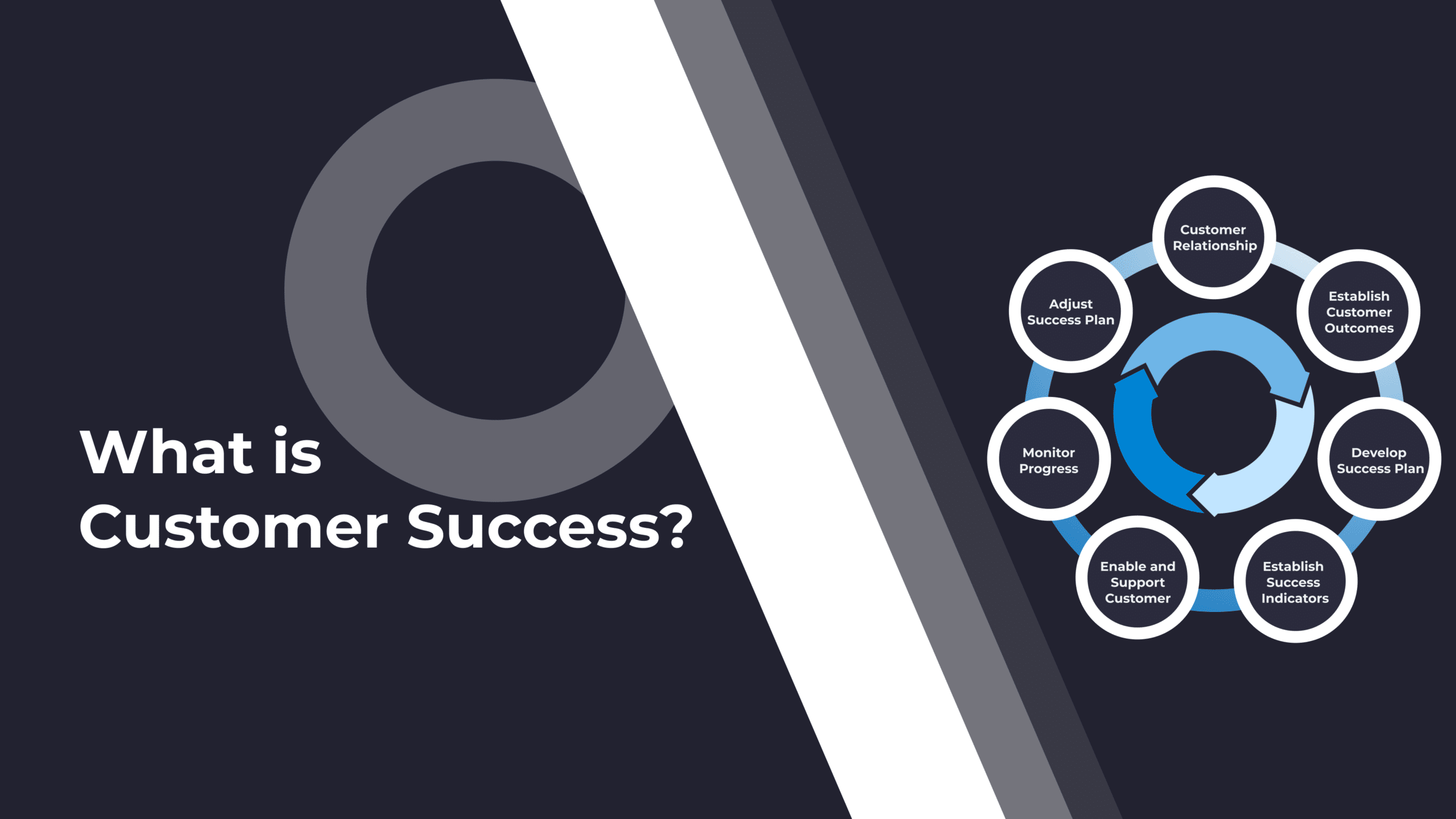Unaligned goals and KPIs have been a challenge of customer success teams since day one.
Sadly, even today it rings true for CSMs, with some listing it as their top CS challenge in 2022 during a recent webinar.
This only proves proper CS alignment is still a struggle and a priority for many in the CS community. As the space evolves to be more data-driven and customer-focused, the entire purpose of customer success risks being lost due to poorly aligned goals and KPIs.
Against this backdrop of uncertainty, many look to 2023 to streamline their collaboration for customer success and boost goal alignment across their teams. That’s why today, we’re going to help you meet that challenge before it becomes too big to tackle.
Why Do We Need Customer Success Alignment?
Customer success alignment is a company-wide effort to be customer-first. It’s not simply alignment with the CS team (though it’s a big part of it) but alignment on the principles of customer success throughout the business and especially customer-facing departments like:
- Marketing
- Sales
- Account Management
- Customer Service and Support
Add to that the CS team, which must champion and advocate CS alignment with all stakeholders and then lead the entire collaboration effort.
“There need to be shared goals across an organization so that we’re all moving in the same direction. And that starts with the leaders of the functions themselves.” — Jeff Heckler, Director of Customer Success at MarketSource
during our webinar on Aligning Sales with Customer Success
Leaders should rally their colleagues around these goals. Even beyond customer-facing teams, other branches should be brought into CS collaboration, like finance, product, or business development:
- It’s been stated many times that CS leaders should befriend their CFO so they can prove their value and obtain a better customer success budget.
- Alignment with the product team helps ensure you know what your product does, what your devs’ capabilities are, what you can do to train customers and colleagues, and how you can work together towards customer goals.
- As for business development, let’s hear why it’s important from Maranda Dziekonski:

The Advantages of a CS-Aligned Organization
With just a bit of sustained work from the customer success team, your CS-aligned business could see:
- Improved understanding of customer journeys and behavior
- Optimized sales to customer success handoffs
- Better sales pitches during upsell / cross-sell proposals
- Data-led and goal-aligned product updates, fixes, and features
- Improved sync around business KPIs and customer goals
- Streamlined customer experiences
- Consistent messaging across all marketing and sales initiatives
- Adequate product training for everyone in the organization
Add everything together, and you’ll unlock the ability to drive business growth directly as a result of customer success. Think about it: how likely are satisfied customers to recommend you? Probably not very much – true alignment will help you boost word-of-mouth marketing and kickstart referrals. But even beyond referrals, it allows you to nurture those accounts into long-lasting business relationships and connections. Our own research on quiet quitting in customer success shows 12% of CSMs would perform better with increased alignment on company goals and customer needs, while 15% want a clear direction for their efforts.
In what follows, we’ll explore some concrete steps you can take to power up collaboration for customer success:
How to Promote Collaboration for Customer Success and Align with Other Departments
1. Create One Customer Journey and ensure everyone in the organization is on the same page
The first thing you, as a CS leader, need to do is create an optimized customer journey for each customer segment. Having one customer journey per group of customers, which everyone in the business knows by heart, will help keep everyone on the same page.
Of course, variations will happen because, realistically, most customers won’t fit into a single customer journey unless your product is very simple. That being said, a baseline journey will be of use even for customers that stand out – if only because you’ll notice them and adjust your customer success strategy to fit their use case.
Some general tips for creating an optimized customer journey:
- Settle on the main journey stages for your business.
- Spread them out in a comprehensive and user-friendly map.
- Include all the teams involved in each stage of the customer journey.
- Clearly illustrate how those teams collaborate.
- Assign metrics to your customer journey stages.
- Always keep the map updated for all stakeholders.

Customer Journey Map Example. Source: How to Create a Customer Success Journey Map
2. Forward the best customer feedback to stakeholders and analyze it
Getting feedback from your users? Fantastic, it means they’re invested in your relationship and want to improve it. You should always jump on this feedback to analyze it and see if it’s in any way relevant to your customers’ goals, your business goals, and what your product team’s working on.
The best way to use this feedback is by:
- Sifting through all the suggestions to handpick the best ones
- Forwarding them to relevant stakeholders for analysis, especially the product team
- Creating a story around the feedback and why you think it’s relevant
- Being available for questions from stakeholders
- Offering to help if and when the product team decides to act on the feedback
- Informing the customer that their request was handled and thanking them
Test the process out, tweak it to your liking, but essentially it will remain the same. By the end, you’ll be able to turn the one-time initiative into a process by creating a Voice of the Customer program.
3. Create a proper Sales-to-CS handoff process and stick to it
Often a contentious point in the relationship between CS and Sales, the handoff is the thing that happens when a sale is complete and CS needs to take over. Broadly speaking, it needs to include:
- CSM introductions
- Constant syncs between Sales and CS
- Keeping CS informed
- Total transparency between Sales and CS
The sales-to-CS handoff process should also set guidelines for all future customer onboardings, including:
- who does the product demo?
- who handles the onboarding?
- who helps the customer with implementation?
- who or what does the product tour?
Focusing on the initial stages of your business relationship with customers will help increase product adoption and user retention, and decrease customer churn. Here are some more tips on the knowledge transfer that needs to happen at this stage:

Source: The Ideal Sales to Customer Success Handoff
4. Make sure the CS team has or receives proper sales training
Customer success often has to present upsells and cross-sells just like a salesperson. In fact, this point has been a source of friction between the two departments ever since CS became a thing: who handles the upselling? Should Sales jump on that because they’re already good at it? Or should CS take it because they have a good relationship with the customer?
Throughout our articles (and nearly everywhere else on the web) the conclusion is that upselling and cross-selling are tasks that fall under customer success. While this may vary based on your business model, the fact is CS will always benefit from sales training.
So in your list of initiatives to improve collaboration for customer success, you should add sales training for the CS team as an essential part in increasing both customer-focus and the ROI of CS.
5. Foster a working relationship with Product and ensure proper communication and collaboration
CS and Product collaboration starts with syncs on one or two customer issues or feature requests. But as you begin to handle more and more tasks together, your job as a CS leader is to settle on a process that makes sense for both teams and implement it.
For this process, here are a few options to pick and choose from:
- A simple Slack channel specifically for CS-product interactions
- Regular meetings to sync on customer issues and requests
- Occasional product marketing syncs held by your product marketer
- Selecting the best-fit customers for product UX testing
- Allowing the product manager & their team to view your CS dashboard, or create their own
If there’s any pushback to your push for more customer success and product collaboration, remind yourself and your colleagues that there’s no product without the customers.
6. Align business goals with customer goals and enable data-led company-wide alignment with those goals
Before you begin the process of aligning your goals and KPIs, you need two things:
- A clear view of your customers’ goals.
- A clear statement of your company goals.
Next, you should pick some metrics to assign to those goals. These metrics should be easy to track, be consistent across the entire organization, and present a good picture of your journey toward those goals.
After you have all of the above, it’s time to decide how you can best merge the goals and metrics to create a comprehensive, data-led set of company-wide objectives. You can do this in a brainstorming session with all stakeholders, a group chat, or whatever other method you prefer.
By the end, however, all these goals you’ve analyzed, tweaked, and set should be communicated to everyone else in the company who needs to align on them.
7. Create a product story based on customer experiences and make sure marketing is selling the product truth
Having a clear picture of your accounts can be a hassle. It can be challenging to work with 3 different tools, all with separate sets of metrics. But once you bring that tracking element into alignment, you’ll be left with some nuggets of data.
How do you get the gold out of those nuggets? Simple – create a data-backed story for every common customer experience scenario. You can partner with marketing to create surveys, polls, testimonials, and feedback forms to help you polish the raw data into a product story.
Instead of thinking in a silo, really look at how customer success and sales can better partner together or how you can leverage marketing as a tool and as a resource to drive customer engagement. — Maranda Dziekonski, Chief Customer Officer at Swiftly during our webinar on Customer Success in 2023
Once you have an effective process for marketing-CS collaboration, you should also align on product truth. Showing some product stories to the marketing team (and even to sales) can help them:
- understand the product and how it’s supposed to work
- understand how customers actually use the product
- find and help fill any delivery gaps
- create more useful content (both marketing and customer education content)
- set consistent messaging across marketing and sales channels
- and better sell your products / services and their features

The best approach to achieve this alignment is to first quiz both the marketing and sales departments on your product. That should tell CS leaders whether their colleagues understand the product and its capabilities and whether they can adequately further present both to your target audience.
If marketing and sales do not know the full capabilities of the product – they can’t do a good job of promising and aligning those with the client.
— Mark Higginson, Chief Customer Officer at Roster speaking at the Customer Success Festival, October 2022
If you find that many team members require product training, you can set up meetings with them and even with one or two members of the Product team. This is a great way of also practicing your customer onboarding skills, as you’re essentially presenting the same product or service without the added pressure of talking to a customer.
Last but not least, you should encourage and support the marketing team to create materials about the product. This won’t just help customers, it’ll also help the marketing team learn more and, in return, be better at their jobs.
All-in CS Alignment, or Collaboration Dreams for the Very Best of Teams
After everything’s said and done, an ideal version of collaboration for customer success should look something like this:
- Each team receives training on customer success and understanding customers
- Everyone is aligned with the company leaders and the customer-facing teams
- Every team has its purpose and works towards it to the best of their ability
- Everyone works as a team, not in fragmented departments, reducing double work
- When you receive product requests, you know exactly how to handle them
- Everyone knows who handles customer communications for all customer journey stages
- You have a playbook by which everything happens, featuring clear, aligned goals & KPIs
You can use this 7-point checklist to effectively measure your CS alignment across the company. For more information, you can review Artem Gurnov’s article here, as he goes into more detail about why each step is vital.

Aim for One Company, One Objective
If you’re having trouble figuring out where to start on improving collaboration for customer success, think about this:
You’re all one company. You should strive to have one objective: to serve customers, helping them succeed together with you. It’s the quintessential scope of customer success, and it should dictate everything you do moving forward.
Good luck!




